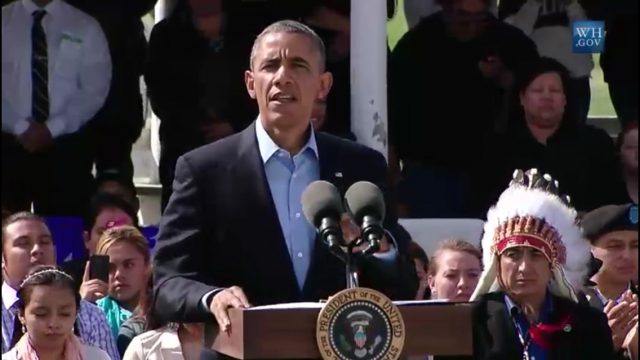Federal Government Stands In The Way Of Reducing Flaring In North Dakota

In the debate surrounding energy development in North Dakota, the state government is often accused of being too lax in its regulation. Ironically, though, when it comes to flaring what is standing in the way of compliance with the state’s tough new flaring regulations – which allow for limits on oil production if gas flaring isn’t kept down to acceptable levels – it’s the federal government that’s the problem.
In the most recent report on oil and gas development, Department of Mineral Resources Director Lynn Helms noted that the state went backward a bit on the flaring rate:
This week, Lynn Helms, director of North Dakota’s Department of Mineral Resources, said that statewide, 28% of associated gas was flared in August, just above the 26% flared limit set by the North Dakota Industrial Commission earlier this year. Under these rules, operators need to reduce flaring levels to 26% by October 1, then 23% by January 1, 15% within two years and 10% by 2020. Producers face dramatic oil production curtailment penalties if they fail to meet these flaring reduction benchmarks.
While the flaring levels from August are close to where these producers are required to be overall, they actually represent a step back in progress from July, when 26% of gas was not captured, and flared gas was reduced by 18.6 MMcf/d from a month earlier. In August, the daily volume of gas flared actually increased 23.5 MMcf/d from July.
“We lost all of that we gained between June and July, plus a little bit more,” Helms said.
What’s the problem? The Fort Berthold Indian Reservation where flaring rates are significantly higher than the rest of the state – 35.5 percent on the reservation compared to 26 percent overall – and where a maze of state, federal, and tribal regulations make the build-out of infrastructure to capture the gas difficult.
In a report earlier this year, the tribes said that of the 48% of gas it was flaring at the time, 44% was being flared due to limited takeaway capacity. Building new infrastructure, such as pipelines and gas-gathering facilities, is complicated by the overlap of federal, tribal and state regulations, the tribes claimed.
“The mistaken treatment of Reservation lands as ‘public lands’ creates an onerous burden on development of Reservation lands, and long delays in permitting and [right of way] approval, which reflects a much higher flaring percentage,” the report said. “Removal of these legally unfounded restrictions would facilitate the capture of gas more efficiently on the Reservation.”
Ironically, the answer may lay in something President Barack Obama touted when he visited one of North Dakota’s reservations earlier this year: tribal sovereignty.
“I know that throughout history, the United States often didn’t give the nation-to-nation relationship the respect that it deserved,” the President said during his brief address in Cannon Ball, North Dakota. “So I promised when I ran to be a President who’d change that — a President who honors our sacred trust, and who respects your sovereignty, and upholds treaty obligations, and who works with you in a spirit of true partnership, in mutual respect, to give our children the future that they deserve.”
But just a week after Obama spoke those words a member of his administration was before the House Natural Resources Committee to argue against a bill that would give tribes greater sovereignty in regulating oil and gas development on Indian land.
The bill is sponsored by Rep. Kevin Cramer of North Dakota (as well as John Hoeven on the Senate side), and according to a press release on Cramer’s website would allow tribes to opt-in to a categorial exclusion from the National Environmental Policy Act in order to speed the development of gas-gathering pipelines.
“I was just with the President of the United States on a North Dakota reservation a week ago where he talked about honoring sovereignty and here the administration seems to be going against that very concept of sovereignty for the tribe,” Cramer told Michael Nedd, the Assistant Director for Minerals and Realty Management for the Bureau of Land Management, during questioning before the House Natural Resources Committee back in June (video below).
“Congressman what I can say again that the Secretary’s authority under the Indian Minerals Leasing Act certainly allows the BLM to work with the tribes in managing those trust lands,” Nedd said in response. “In working through the tribes with consultation, the BLM certainly incorporates their input into that. And so the administration feels again they have enough authority to proceed to conduct the work on the authority Congress has given them. This bill would just inject confusion and the administration position is that we they have enough authority to do that.”
But clearly that isn’t true. As the State of North Dakota works on reducing flaring, the federal government is standing in the way.
You could cut the irony with a knife. The Obama administration has taken a more forceful stand on environmental issues than perhaps any administration before it, yet what’s standing in the way of fixing an environmental issues in North Dakota is that same administration’s refusal to live up to its own lofty notions about tribal sovereignty.




